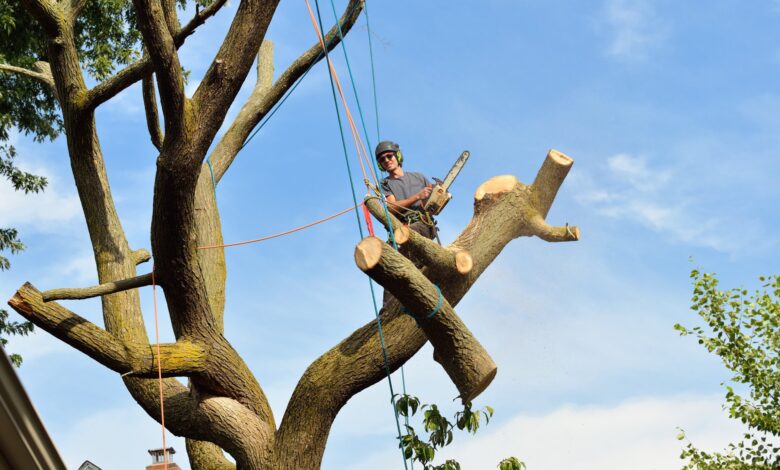Emergency Tree Removal: How to Effectively Prepare Your Home

Are you looking to prepare your home for emergency tree removal?
There are plenty of things that you can and should do to ensure your safety and the safety of your family.
If you’re looking to prepare your home for a future emergency, we’ve got some tips on how to clear and prepare your yard before the situation arises. Keep reading to learn more.
The Importance of Tree Maintenance
Proactive tree care can help prevent many issues that may lead to emergencies down the line. Here are some compelling reasons to invest in tree maintenance:
Safety First
Safety should be your top priority when it comes to trees on your property. Regular inspections and maintenance help identify weak branches, diseased trees, or trees at risk of falling.
Property Protection
Your home and vehicles are valuable assets, and a falling tree can cause extensive damage. Regular tree maintenance, including pruning and removal of dead or weak branches, can reduce the risk of such costly incidents.
Aesthetic Appeal
Well-maintained trees contribute to the overall beauty and curb appeal of your property. Proper care ensures that your trees remain healthy and vibrant, enhancing the visual appeal of your home.
Environmental Benefits
Healthy trees provide many environmental benefits. These include oxygen production, carbon dioxide absorption, and habitat for wildlife. By caring for your trees, you contribute to the well-being of your local ecosystem.
Signs of a Hazardous Tree
Identifying a hazardous tree before it becomes an emergency is critical for your safety and property protection. Here are some signs to watch for:
Leaning Trees
Trees that lean significantly are often unstable and at risk of falling. This may be due to root damage, soil erosion, or wind damage.
Dead or Dying Branches
Dead or dying branches can easily break off during storms and become projectiles. Look for branches with no leaves or obvious signs of decay. If your tree frequently drops large limbs, it may be suffering from structural issues or disease.
Cracks or Splits
Visible cracks or splits in the trunk or major branches are red flags. These weaken the tree’s structure and increase the risk of failure.
Fungus or Rot
Fungus growth on the trunk or root flare of a tree can indicate internal decay. Mushrooms growing at the base of the tree are also a cause for concern.
There are also certain pests such as wood-boring insects. These can weaken a tree’s structure and make it more susceptible to falling.
Root Problems
Some issues with the tree’s root system include girdling roots or soil erosion around the base. This can destabilize the tree.
If you observe any of these signs in your trees, it’s essential to address them promptly. You need to do regular maintenance or, if necessary, emergency removal.
Preparing for Emergency Tree Removal
Emergency tree removal is a task best handled by professionals. But, there are steps you can take to prepare your home for such an eventuality. Here’s what you need to do:
Inspect Your Trees Regularly
Regular tree inspections can help you identify potential hazards early on. Look for the signs mentioned above. Contact a certified arborist if you’re unsure about the health and stability of a tree.
Maintain a Safe Distance
When planting new trees, make sure they are at a safe distance from your home, power lines, and other structures. Proper spacing can minimize the risk of damage during a storm.
Prune Your Trees
Regular pruning is an essential part of tree maintenance. Pruning helps remove dead or weak branches, reduces wind resistance, and improves the overall health of the tree. Hire a professional arborist for pruning to ensure it’s done correctly and safely.
Establish an Emergency Fund
Tree removal can be costly, especially during emergencies. You must prepare for unexpected expenses. Establish an emergency fund that can cover the costs of tree trimming and potential property repairs.
Contact Professional Arborists
In the event of a tree-related emergency, don’t attempt to remove the tree yourself. Instead, contact a professional arborist or tree removal service like Palmetto Tree Service. These experts have the knowledge, equipment, and experience to remove trees without causing further damage.
Create an Emergency Plan
Develop a comprehensive emergency plan that includes contact information for local tree removal services and arborists. Share this plan with your family members so that everyone knows what to do in case of a tree-related emergency.
Check Your Insurance
Review your homeowner’s insurance policy to understand what it covers for tree damage. Ensure you have adequate coverage in case a tree falls on your home or property.
What to Expect During Emergency Tree Removal
When you experience a tree-related emergency, it’s essential to know what to expect during the removal process. Here’s a general outline of the steps involved:
Assessment
The first step is to assess the situation. A certified arborist will evaluate the tree’s condition, the extent of the damage, and the potential risks involved in removing it.
Safety Measures
Before any work begins, safety precautions will be taken. This may involve cordoning off the area to keep people and pets away from the danger zone.
Tree Removal
Once safety measures are in place, the arborist or tree removal crew will carefully cut down the tree in sections. This is done strategically to minimize damage to surrounding structures. It should also ensure the safety of everyone involved.
Cleanup
After the tree is removed, the debris will be cleaned up. This includes cutting the tree into manageable pieces and removing branches. It also involves the proper disposal of the wood and foliage.
Stump Removal (if necessary)
Depending on the circumstances, you may opt for stump removal or grinding to eliminate any remnants of the tree. Stump removal is not always necessary. But, it can improve the aesthetics of your property and prevent potential issues in the future.
Restoration
After the tree and stump have been removed, your property may need some restoration work. This can include repairing damaged structures, landscaping, and replanting trees if desired.
Inspection and Prevention
To prevent future emergencies, have your remaining trees inspected for potential hazards. Implement a regular maintenance schedule to keep your trees healthy and safe.
Start Preparing for Emergency Tree Removal Today
Preparing your home for emergency tree removal is crucial in keeping your property and loved ones safe. By following these steps, you can cut potential damage and ensure a smooth and efficient removal process.
Don’t wait for a disaster to strike, take action now and make sure your home is ready. Start preparing today!
Please take a look at our blog for more educational articles.
You Might Also Like:



